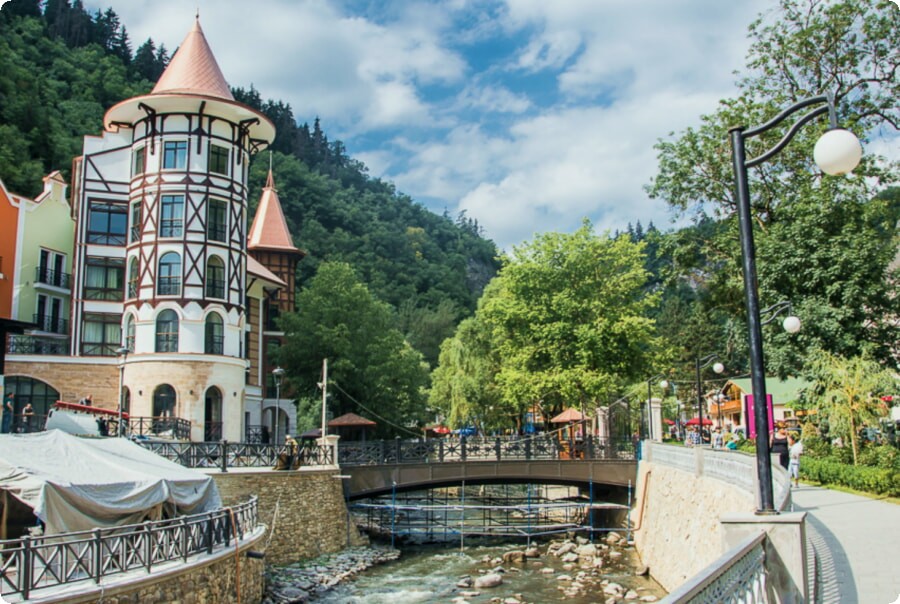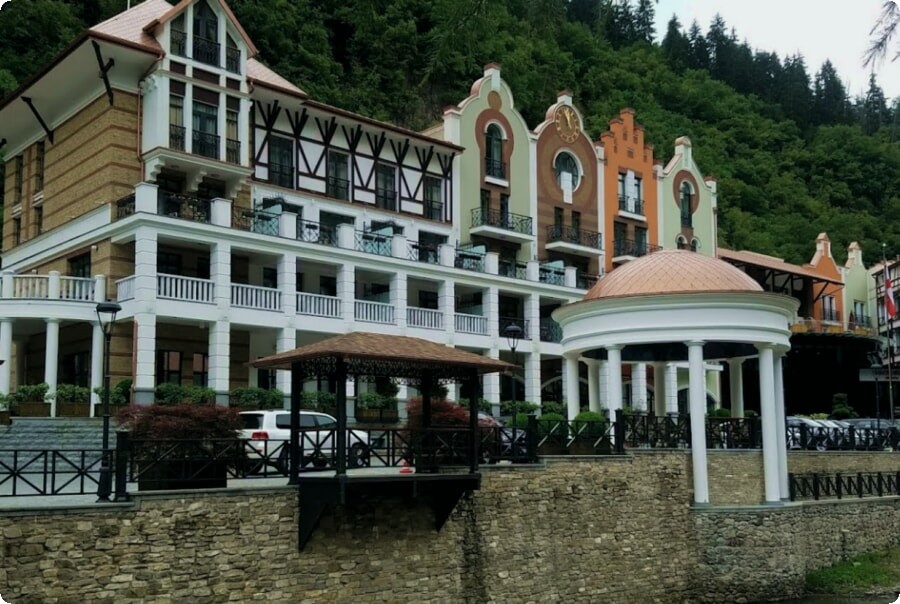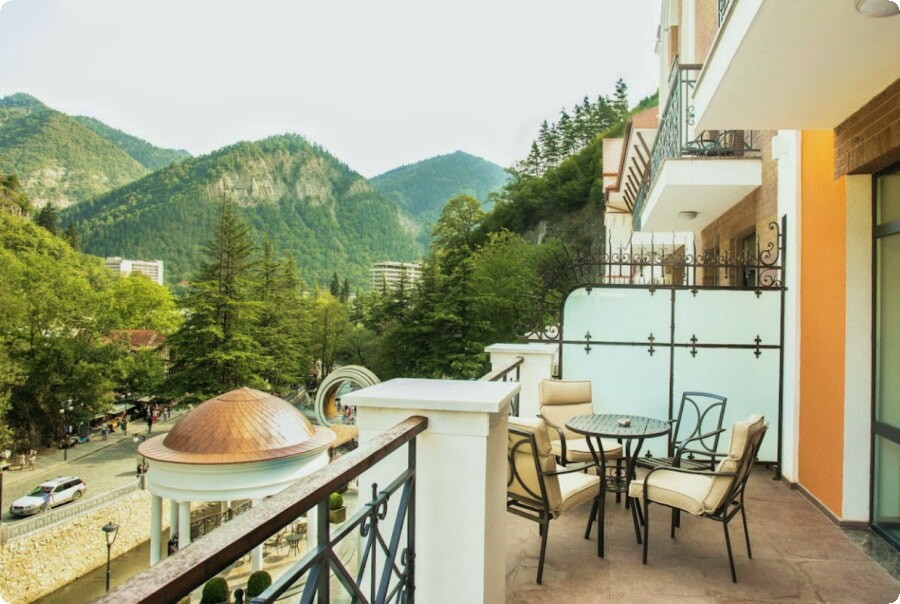Borjomi.
Surrounded by greenery, the cozy Borjomi town is located 150 kilometers from Tbilisi in the gorge of the Mtkvari (Kura) River among small mountain ranges, with slopes covered with forests.
The fame of the city was brought by the water, which has healing properties. There are two springs in the city, which are popularly called cold and hot. The cold spring is located on April 9 Street, not far from the entrance to the Borjomi park, and the hot spring is located in a pavilion with a glass roof in the center of the park itself.
Many tourists prefer to use car rental services in Georgia. The average cost of renting a car at Batumi airport is 17 euros per day, in the center of Tbilisi - 18 euros per day.
One of the main attractions of the city is the April 9 pedestrian street with its peculiar architecture. The bridge over the Borjomka River, made in the form of a curl or shell, the mansion of the Persian consul Mirza-Riz-Khan, built in the 19th century, known as "Firuza" (Turquoise), draws attention. A paved street leads along the Borjomula River (local name) to the entrance to the Central Park.
Borjomi Central Park is pleasant for walking - shady thickets of trees, benches for rest, children's attractions, a small waterfall with a sculpture "Prometheus", bridges across the Borjomka River.
If you go through the entire park, which is about a kilometer, the road will lead to the forest, and there, after two kilometers, it will lead to thermal springs - sulfur pools, the water in which is about 30 degrees. It is believed that the baths of these pools help with many diseases.
In front of the entrance to the park there is a cable car station that takes you up to the plateau, where you can enjoy the view of the park and the city from a bird's eye view. A Ferris wheel is installed here, and a forest road will lead to a small church of Seraphim of Sarov.
On the other side of the Kura, along St. Nino Street, there is a museum of local lore, where archeological objects and personal belongings of the Romanov family are exhibited. The building was built in 1890.
Fans of long walks can visit the Borjomi-Kharagauli National Park. There are 11 hiking trails of varying difficulty in the park. In addition to the one-day route, there are more difficult ones, calculated from two to four days.


Bakuriani.
Not far from Borjomi is the village of Bakuriani. You can get there by minibus, but most travelers choose the narrow-gauge road, 37 km long, because it runs through picturesque places, and the Tsagveri-Tsemi bridge, which the cuckoo passes along the way, was designed by Gustave Eiffel.
Bakuriani is a ski resort with several slopes of varying difficulty. You can relax here at any time, but the bulk of tourists come in the winter.
Surami.
Located 35 km. from Borjomi. Surami village is a climatic resort, known not only for its mineral water, but also for its fortress, which in the Middle Ages was considered impregnable. It is mentioned in documentary sources in the 18th century, but the building layers found in it indicate that the fortress already existed in the 15th-16th centuries.In 1984, Sergei Parajanov filmed the film "The Legend of the Surami Fortress".


Green Monastery.
Known since the 9th century, one of the oldest monasteries is located 7 km. from Borjomi, bears the name of St. George. Located in a picturesque forest area. According to the stories of the guides, during the attack of Shah Tamaz I, in the 15th century, about 300 monks were killed by the Ottomans. The blood of the dead brothers filled the local river, and its stones remain red to this day.
In the vicinity of Borjomi, partially preserved fortresses are available for inspection - Gogia, Petre and Sali.
If you stop in Borjomi for a few days, you can visit places located about a hundred kilometers away - the cave cities of Uplistsikhe and Vardzia, the Rabat fortresses in Akhaltsikhe and Khertvisi, the Stalin Museum in Gori.